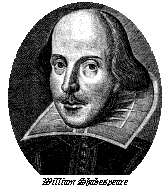|
An author's use of language is often as distinguishable as their actual handwriting. Many things go into shaping an author's individual style, but some elements to look for are:
|
|
|
Diction in writing is essentially, how the author "talks". Flannery O'connor and William Faulkner both use a lot of southern dialogue in their writing. Both are fairly descriptive and colorful in their language. O'connor uses more humor; Faulkner is more formal and "poetic" and even somewhat long-winded. "There was something about his wolflike independence and even courage when the advantage was at least neutral which impressed strangers as if they got from his latent revening ferocity not so much a sense of dependability, as a feeling that his feroicous conviction in the rightness of his own actions would be of advantage to all those whose interest lay with his." From Barnburning by William Faulkner "The doctor's waiting room was very
small, was almost full when the Turpins entered and Mrs.
Turpin, who was very large made it look even smaller with
her presence."
"He was an old man who fished alone in a skiff in the Gulf Stream and he had been gone eighty-four days now without taking a fish." From The Old Man and the Sea by Earnest Hemingway |
Flannery O'connor's stories always involve irony. Irony is a type of humor--it is when something happens that you don't expect: a fireman's house burns down; Miss America poses for porn pictures; a dog is chased by a cat. Remember, though, that this type of humor has a hardness to it. Irony is made up of IRON. In A Good Man is Hard to Find, it is ironic that the family meets and is killed by the very person the Grandmother is forever warning them about. The title and the story is both symbolic and ironic as "a good man is hard to find" because just the opposite happens: "a bad man is easy to find". Also, as we discussed, O'connor challenges the notion of good and bad in this story. |
|
Humor is also a part of language. Some authors, such as Mark Twain are masters of understatement. Understatement is implied humor that you have to "think about" as it "says less" or understates the humorous situation. Examples of understatement:
|
Examples of exaggeration:
|
|
Questions to ask /answer to assist you in analyzing Language
|
|
 Shakespeare's
language is very recognizable.
Shakespeare's
language is very recognizable. Hemingway
is known for his short sentences and simple dialogue.
Hemingway
is known for his short sentences and simple dialogue.
